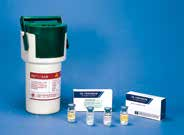核医药
中国医用同位素应用始于20世纪 50年代。60年代初,中国开始研制放射性药物,1974年将医用同位素纳入药品管理。《中国药典》1977年版首次收载放射性药品,1989年国务院颁布了《放射性药品管理办法》,对放射性药物的研制、生产、临床研究和审批等事项作出了严格的规定。中国放射性药物生产符合国家制造标准。核医学显像诊断和治疗建立了完整的临床应用体系。医用钼-99/锝-99m发生器已实现国产化、规模化生产,产品质量与国际接轨。锝-99m显像药物已普遍应用,可满足临床诊断需要。碘-125粒子源已在临床用于多种肿瘤的治疗。PET诊断用正电子药物18F-FDG已实现国产化。碳-13、碳-14呼气检测试剂盒在检测幽门螺杆菌感染的推广应用中发展迅速。医用同位素锶-89也已成功实现国产化,为癌症骨转移患者带来福音。中国同辐公司为放射性药物的主要供应商。

Nuclear Medicine
Medical use of isotopes in China began in the 1950s. The development of radiopharmaceuticals kicked off in the early 1960s. Medical isotopes were included in medication management in 1974 and radiopharmaceuticals were listed in the Pharmacopoeia of the People’s Republic of China in 1977 for the first time. The Measures for Management of Radiopharmaceuticals, promulgated by the State Council in 1989, specifies strict guidelines regarding the development, production, clinical trials, and approval of the use of radiopharmaceuticals. The production of radiopharmaceuticals must meet national radiopharmaceutical production standards. Nuclear medicine imaging has become a widely used tool in clinical diagnosis and treatment. Medical molybdenum-99/ technetium-99m generators are produced domestically on a large scale in line with international standards. Technetium-99m-based radiopharmaceuticals are widely used in diagnostic imaging. Iodine-125 sources are used for cancer treatment. Domestic production of 18F-FDG PET for diagnosis has taken shape. Urea breath test kits labeled with carbon-13 or carbon-14 are widely used for detecting Helicobacter pylori infection. Medical isotope strontium-89 is also produced domestically. Its use greatly benefits patients with bone metastases. The China Isotope & Radiation Corporation is a main supplier of radiopharmaceuticals in China.
